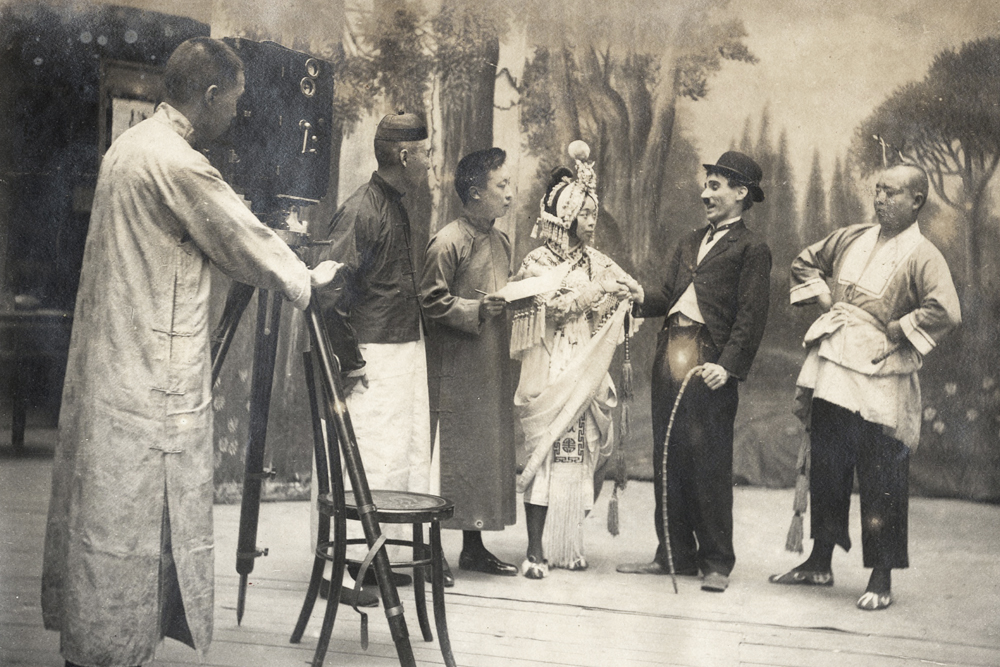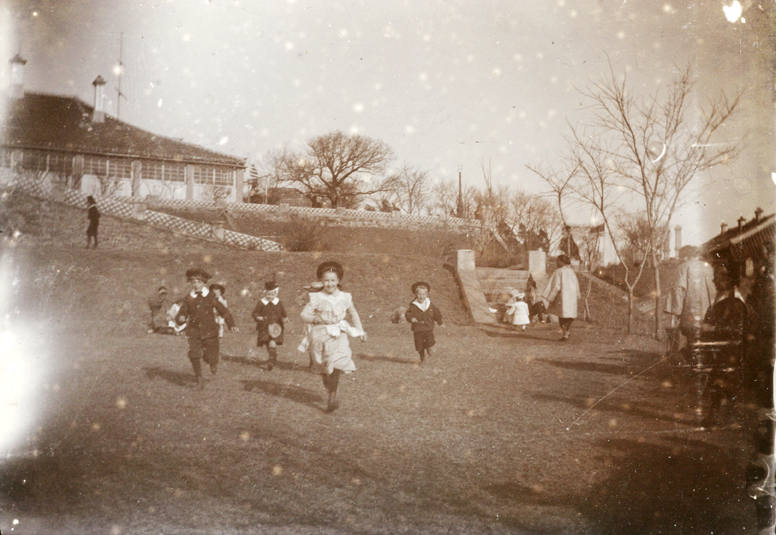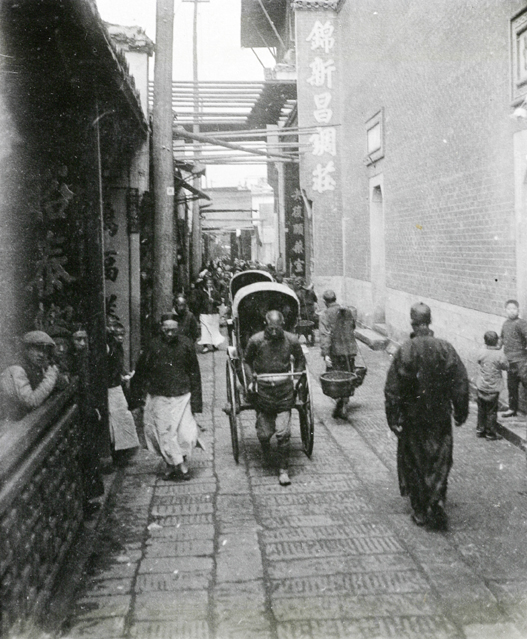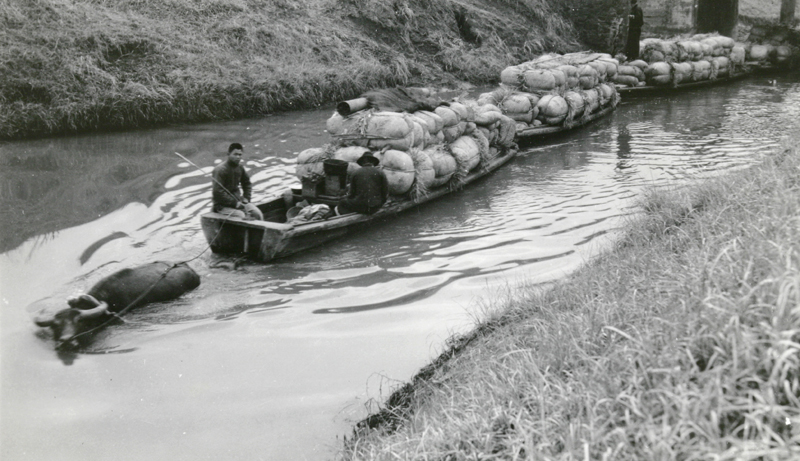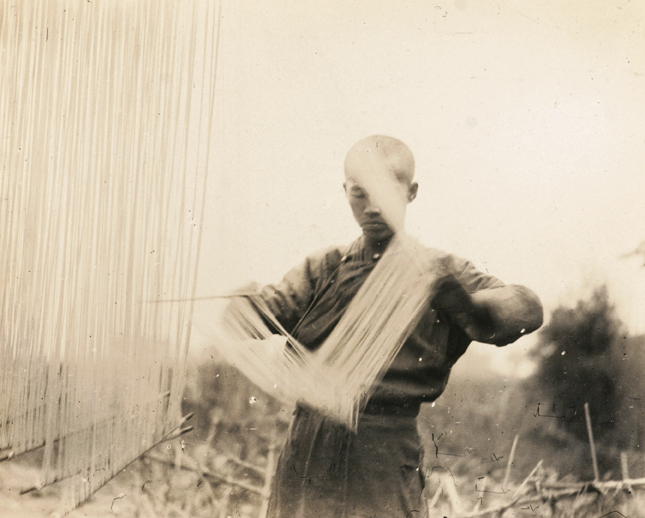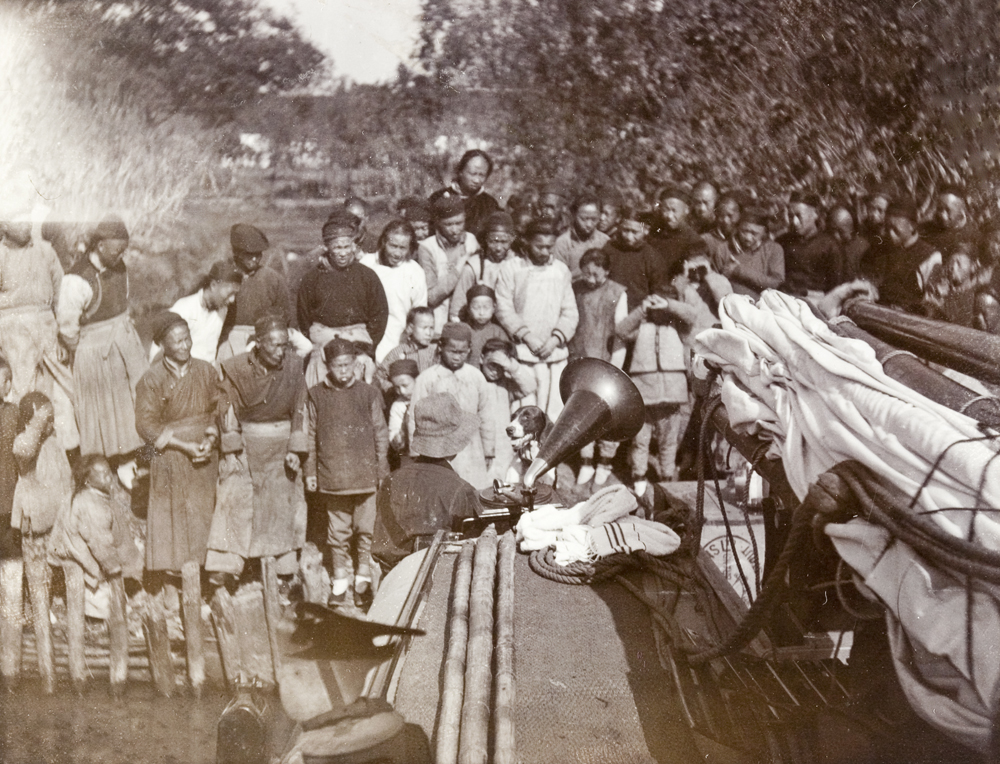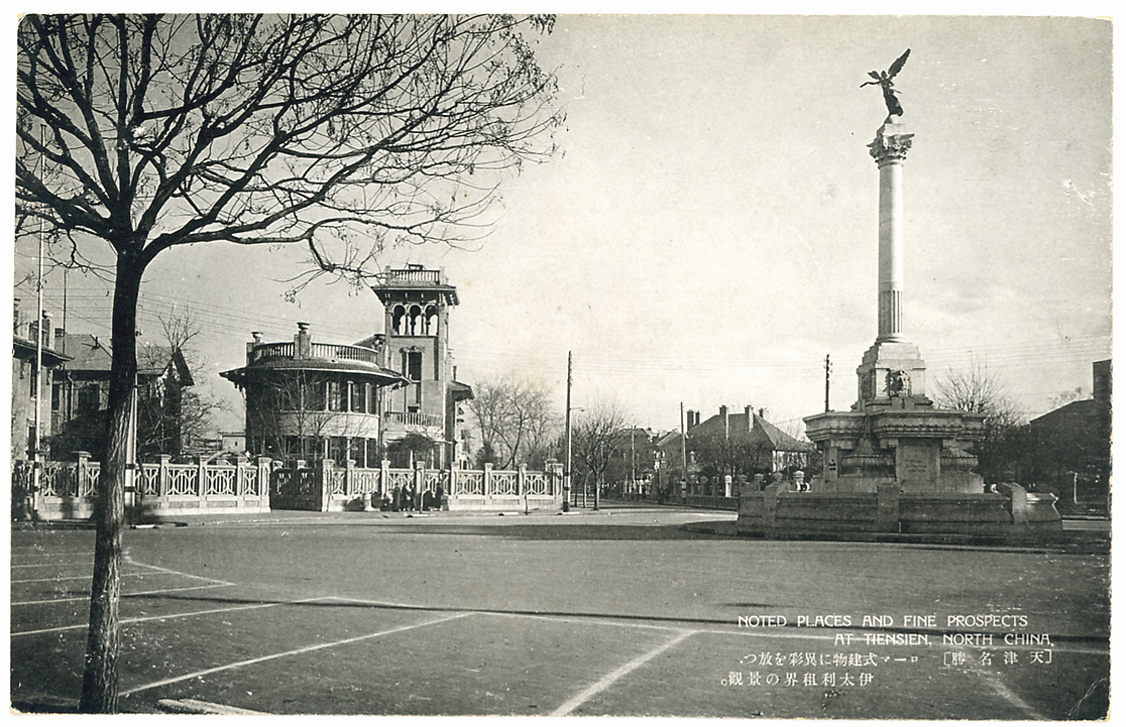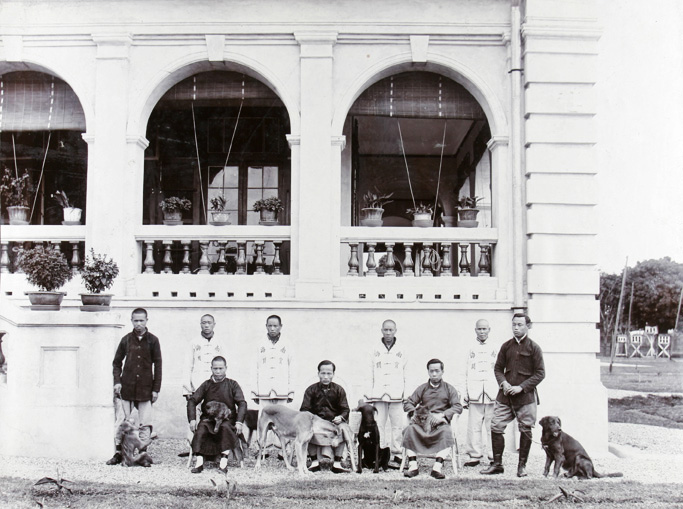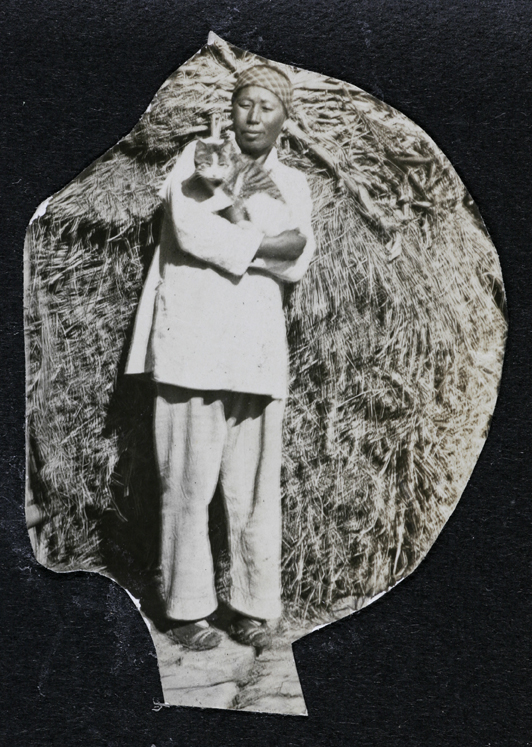
Rural woman and cat, countrside around Lake Tai, c.1920s, Armstrong Collection, ar03-106.
This one of several score portraits in the albums of Shanghai detective chief William Armstrong. They were taken in the years before he left China in 1927, when he was on houseboat holidays west of Shanghai in the Taihu region (around Lake Tai). Armstrong, who never married, is clearly sometimes travelling with another friend from the police force, but the playful intimacy suggested in some shots of one young woman (who appears more than once) suggests that he also sometimes travelled with a Chinese paramour.
The albums are quite distinctive, as this shot indicates, because someone cut around many of the portraits before pasting them on to the pages. This still puzzles us, but it could simply be (as was put to me in a workshop once) that a child, for example, had subsequently assembled the albums. But otherwise there is no obvious logical reason, or obvious effect, underpinning this method of presenting the images. This is the page from which the photograph above comes from:
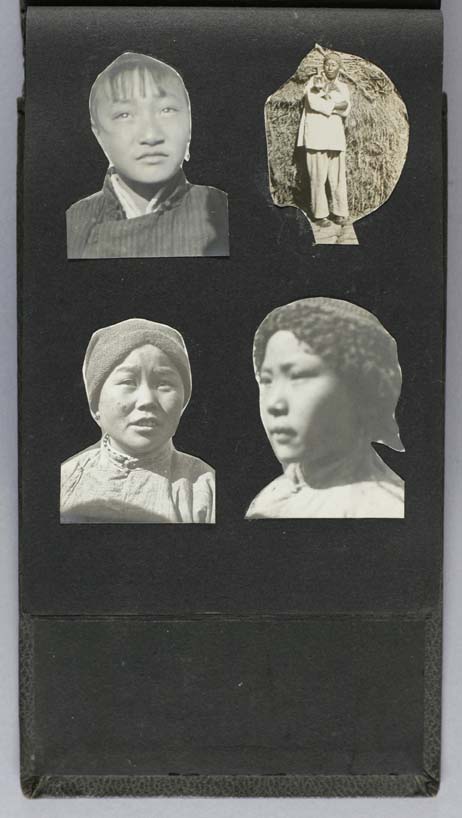
Page of one of William Armstrong's albums, Armstrong Collection, ar03-p53
When we digitise individual photographs, we also digitise every page of every album, as above, although these are not placed online. We can, however, re-create albums digitally, and the albums themeselves, which have their own social history as objects, are as vital as the photographs they contain.
This takes us a long way from our cat, but in searching the archive this was the only cat I could find, and in thinking about this image, I was quickly led out to thinking about this Shanghai detective, and the lost histories of his photograph albums, his Chinese companion, and of their relationship.

